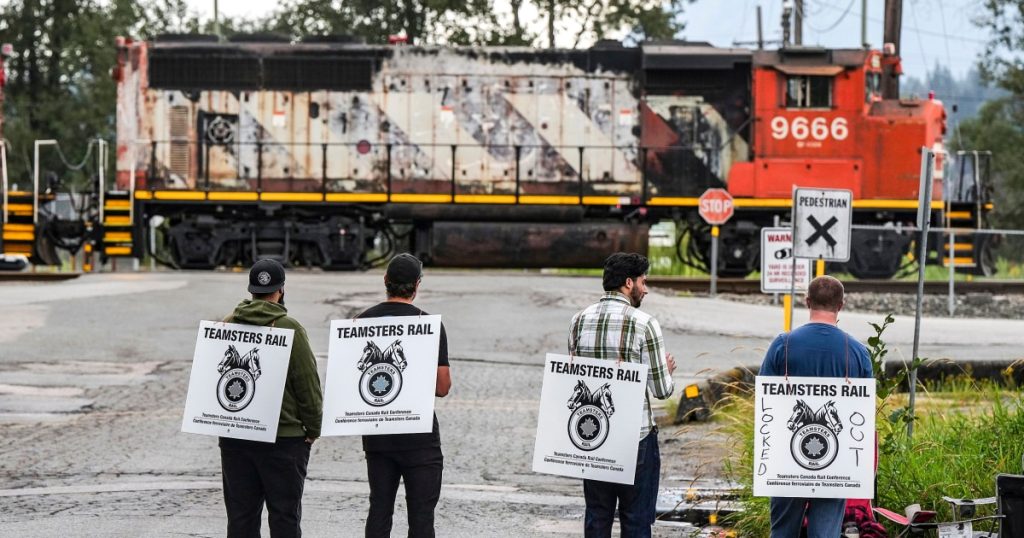The Canadian government intervened in a labor dispute between the country’s two major railroads, Canadian National and CPKC, and their union, forcing them into arbitration to end a lockout that began over a labor agreement impasse. The government’s action came after more than 16 hours of the lockout, with both railroads vowing to get trains moving again as soon as possible. The union representing 10,000 engineers, conductors, and dispatchers accused the railroads of creating a crisis to force government intervention and announced they would keep their picket lines in place while reviewing the decision. Labor Minister Steven MacKinnon expects the trains to resume moving within days following the arbitration process.
Both sides negotiated unsuccessfully throughout the day, with the rail workers picketing outside and business groups urging the government to intervene. Teamsters Canada Rail Conference President criticized the government’s decision to step in, while the railroad companies welcomed the arbitration order, recognizing the economic consequences of a railway work stoppage for the Canadian economy and North American supply chains. The railroads had previously halted rail shipments of hazardous materials and perishable goods as they gradually shut down operations, affecting various industries that rely on rail transport.
The lockouts impacted more than Canada’s freight rail industry, as about 30,000 commuters in Vancouver, Toronto, and Montreal felt the immediate effects and had to find alternative transportation. The negotiations between the railroads and the union had been ongoing for months, focusing on issues related to scheduling, fatigue prevention rules, and rest provisions for train crews. Both railroads had proposed shifting to an hourly payment system, which the union opposed due to concerns about losing fatigue protections. The railroads maintained that their contract offers included raises in line with recent industry deals, with engineers making about $150,000 a year on Canadian National and conductors earning $120,000.
The disruption in rail service raised concerns for businesses that rely on rail transport for their supply chains, with billions of dollars of goods moving between Canada and the U.S. each month. The automotive industry, in particular, relies heavily on rail shipments for engines, parts, and finished vehicles, with potential temporary work stoppages if the lockout persisted. Chemical businesses and food distributors were also at risk of being affected, with railroads halting the acceptance of new hazardous materials and perishable goods shipments. Ultimately, the integration of the two major railroads into the economy highlighted the importance of restoring rail service swiftly to prevent further economic impact.
Canadian Prime Minister Justin Trudeau initially hesitated to force the parties into arbitration before the deadline, fearing backlash from unions and political allies, but ultimately decided that the economic risks were too significant to allow the lockouts to continue. While most businesses may have enough supplies on hand to withstand a brief disruption, a prolonged rail stoppage could lead to cascading effects on various industries. If the arbitration process is successful, trains could be running again within days, averting potentially dire economic consequences across Canada and the U.S., where rail shipments were halted at the border. The government’s intervention aimed to protect national interests and prevent further disruptions to the economy and supply chains.













